|
PZL/IAR P.11F
Romanian Fighter on Skis
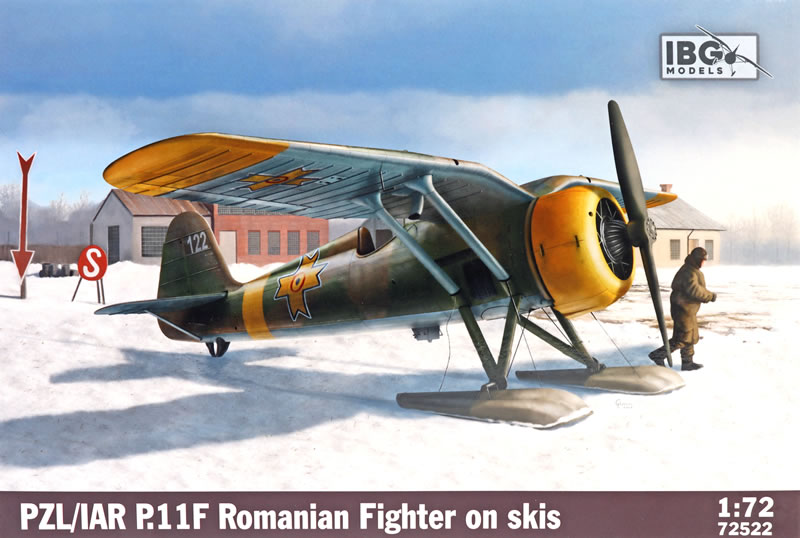
IBG, 1/72 scale
S
u m m a r y |
| Catalogue Number: |
IBG Kit No. 72522 - PZL/IAR P.11F Romanian Fighter on Skis |
| Scale: |
1/72 |
| Contents and Media: |
88 parts in grey coloured plastic; 50 photo-etched parts, five clear parts; two decal sheets with three marking options and full stencil data. |
| Price: |
Euro 12.50 plus shipping available online from IBG's webstore
GBP£11.99 EU Price (£9.99 Export Price) plus shipping available online from Hannants |
| Review Type: |
FirstLook |
| Advantages: |
Quality mouldings, decals and PE, with excellent details in all areas, especially the fine surface panels and lines - just gorgeous. Interesting choice of decals. |
| Disadvantages: |
None noted apart from the care needed in folding some of the photo-etched parts. |
| Conclusion: |
This really is a wonderful kit, beautifully moulded and detailed with excellent photo-etch and heartily recommended to the modeller of aeroplanes of the other Axis powers. |
Reviewed by
Graham Carter

This small high wing gull-wing fighter was developed from the PZL P.7 and early P.11 family starting in 1929 and shown to the world in late 1934. Romania had already purchased 50 P.11Bs from the Polish company and negotiated a contract to produce more in Romania. Ultimately 95 were produced there using their own IAR engines.

A total of 325 P.11 series aircraft were produced and used by central European countries such as Hungary, Romania, Latvia and Poland right through until the mid 1940s. It was a pretty manoeuvrable and well armed little plane but no match to modern contemporary low-wing fighters such as the Bf109, YAKs or Spitfires.
(info from the instruction booklet and Wikipedia)
IBG has already released kits of the P.11c in 1/32 and in 1/72 they have also done a P.11b, P.11f and P.24 G - a development of the early plane with a closed canopy.
As usual, the kit arrives in the familiar sturdy top-opening box with a fine CAD rendition on the lid of one of the decal choices parked on a snowy airfield in Romania.
The kit represents the winterised ski-equipped variant but the parts are there for the wheeled variant so there is no reason why the enterprising modeller cannot build it that way.

Inside the box are four clear sleeves containing eight grey sprues of parts - several of them are small as they contain parts particular to this version such as fuselage halves and engine details - as well as a transparency sprue with all of the different canopies that match the different kits IBG have produced. Only one of these is used for this kit.
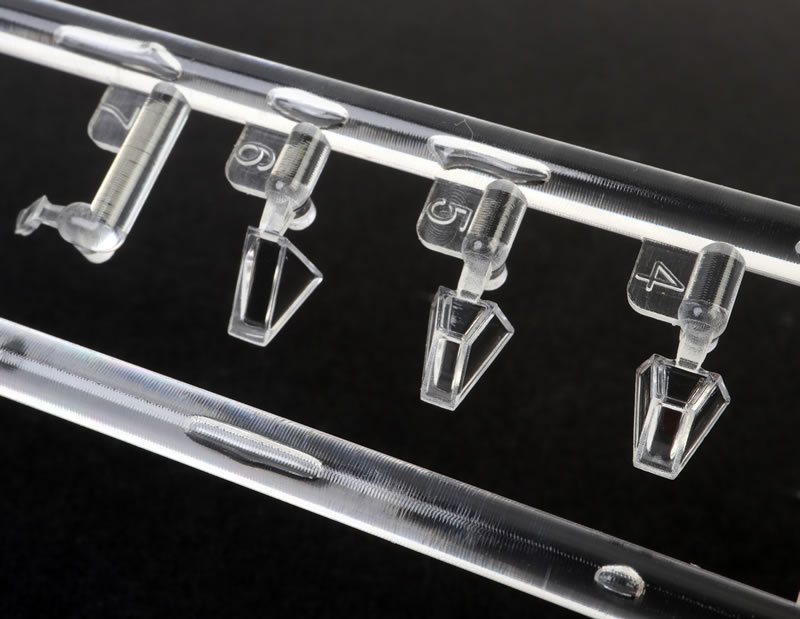
In addition there are two lovely photo-etched frets, decals and a 12-page A4 instruction booklet.
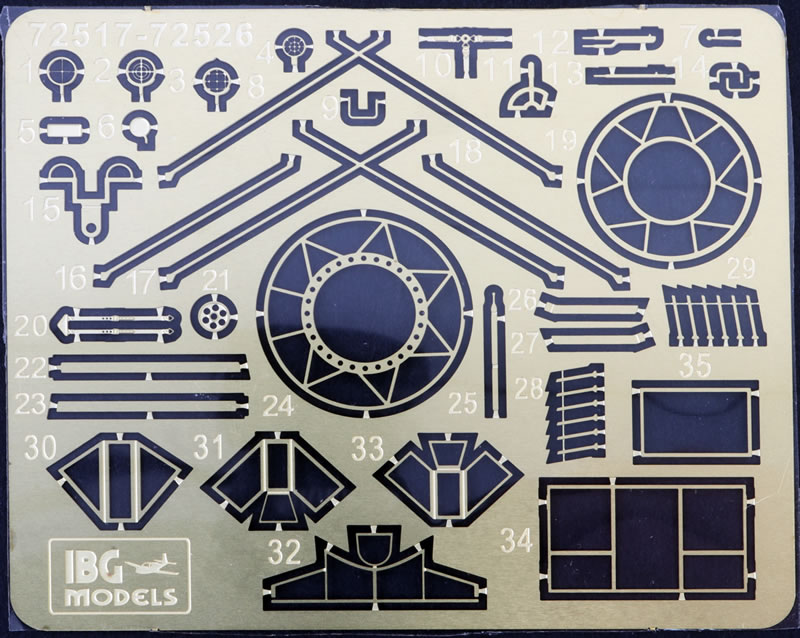
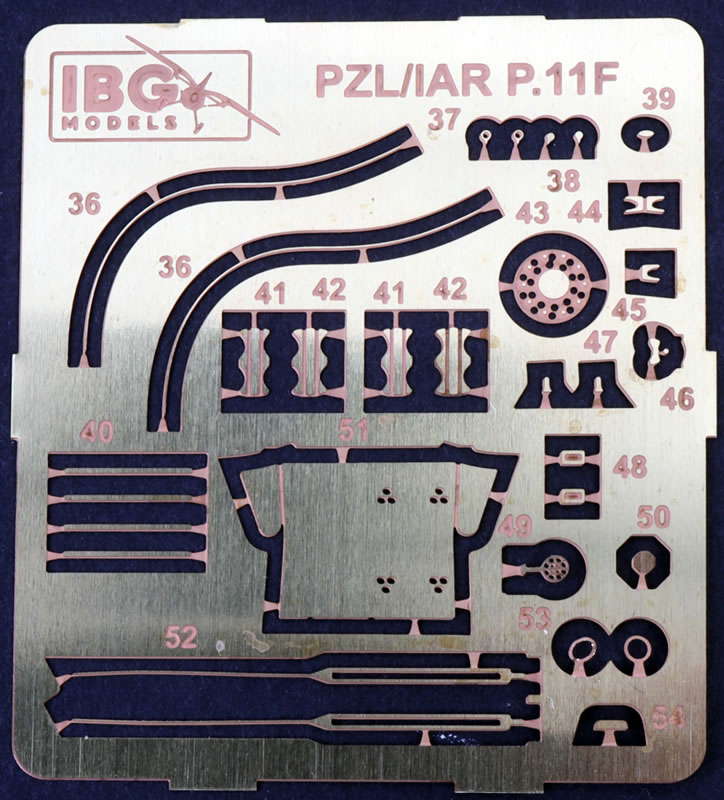
Parts are exquisitely moulded with nary a sign of flash and seams look minimal.
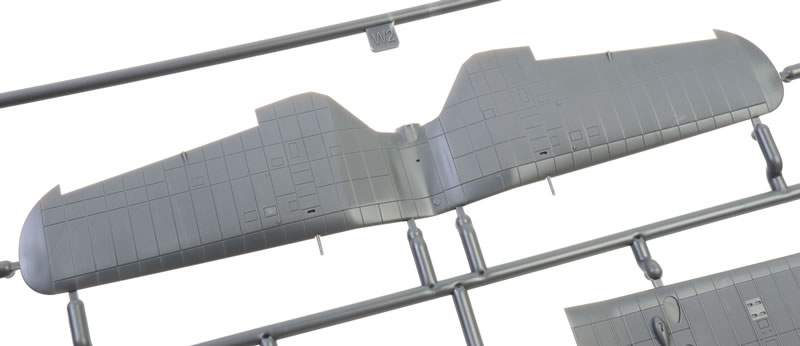
Surface detail is remarkable and I do like the fine variation in texture between fabric and metal surfaces.
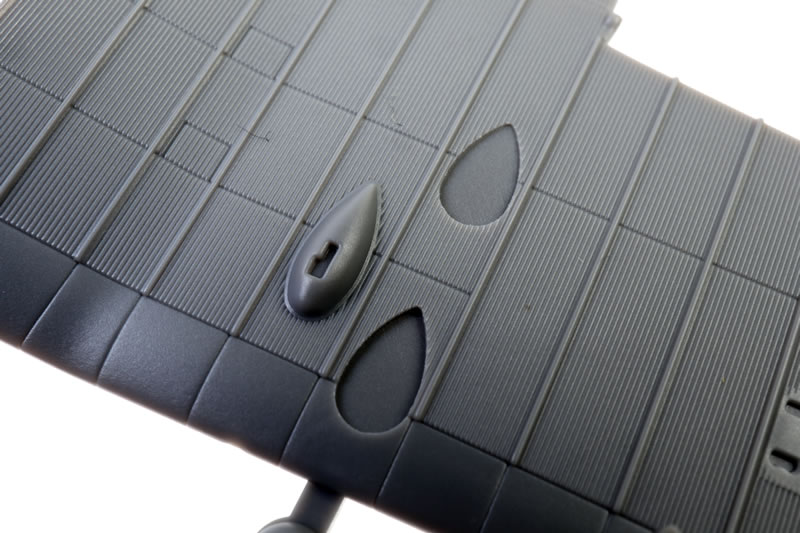
The internal fuselage structure is extremely fine and, as well, there is a separate plastic internal frame complete with a range of levers and boxes in plastic and photo-etch.
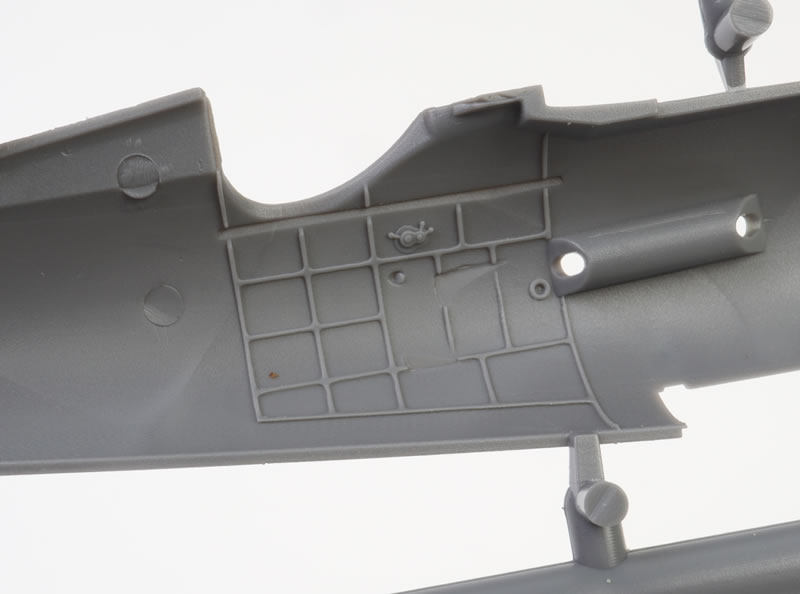
The engine is embellished with a photo-etched harness and looks beautifully moulded.
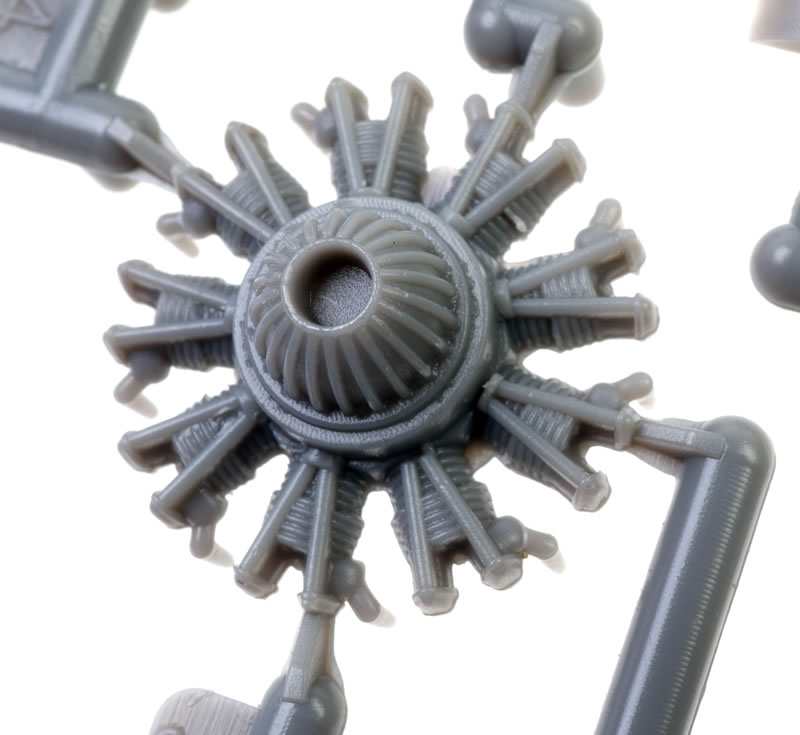
The seat belts and a number of exterior parts such as bomb racks and a target-towing housing on one of the options are also supplied in photo-etch.. These do require some careful folding and a suitable folding tool would be a necessity.
A substantial colour table lists paints for Vallejo Model Air, Hataka, Life Colour, Mr Hobby and AK Interactive numbers. No enamels there.
A drawing shows the paint and decal details for the interior and colours are called out where needed during construction - very thorough.
Instructions and Markings
The instructions include a parts map but this does not indicate which parts are not used , and there are a few of them, including one set of rigging wires on the PE fret. The fifteen construction steps are clearly drawn with arrows indicating where each part goes.
The windshield can be either a plastic one or using a photo-etched frame with clear sheets cut from a sheet of marked panels. This looks fiddly but scale accurate although I would be inclined to use a liquid transparency solution rather than try to attach tiny clear sheets to the frame.
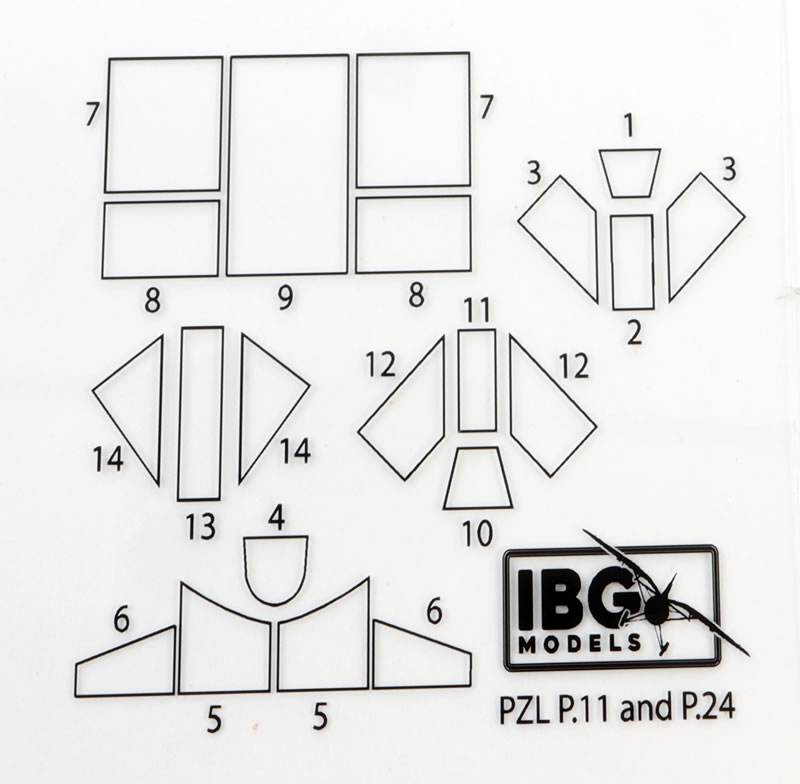
Photo-etch is used to add myriad tiny handles, plates and aerials to the airframe.
The decals are beautifully printed with great colour density and register and represent three aircraft:
-
white 57 from Flotila 2 based near Ploesti for oil installation protection in early 1941, in green/brown disruptive camouflage over pale blue-grey with yellow cowling and narrow fuselage stripe, early roundels are in place,
-
white 128 of Flotila 2 with the same role and scheme, and
-
white 122 of Flotila 3 in 1943 with a target towing under the fuselage, and later Romanian crosses on a green upper surface over the pale blue-green underside.
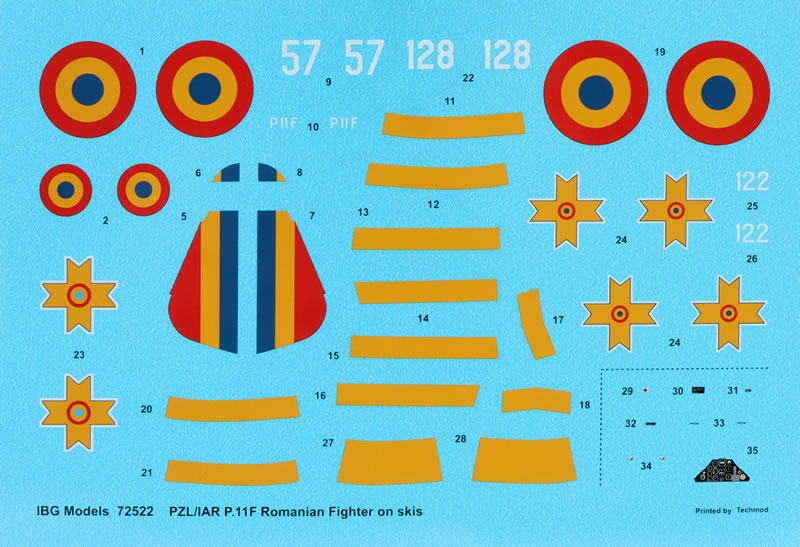
These are all quite attractive schemes and will look great in a collection.
This kit is an absolute cracker and the finesse of mouldings, along with the fine PE embellishments should allow the modeller to produce a beautiful model of this significant aeroplane from the central European conflicts in WWII. I heartily recommend this one to anyone with an interest in this part of the conflict.
Thanks to IBG for the sample
Review Text Copyright © 2023 by Graham Carter
Review Images Copyright © 2023 by Brett Green
Page Created 17 April, 2023
Last updated
18 April, 2023
Back to HyperScale Main Page
Back to Reviews Page
|
